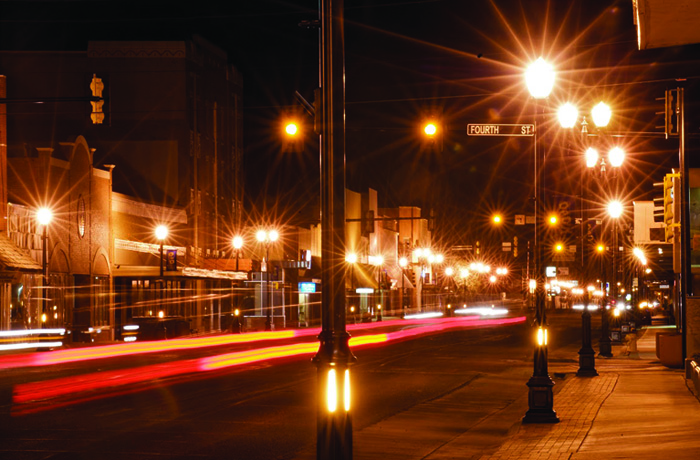In this article, we’ll explore Color temperature, Service life, and Modular design. These are important aspects when selecting LEDs for street lights. After you read this article, you’ll be ready to shop for your first LED street light! And, you’ll be surprised to see the savings and benefits they can offer! We’ll also touch on costs and availability. But first, let’s take a closer look at the LED technology itself.
Color temperature
A new type of LED street light is set to be installed in San Francisco. The new lights have a color temperature (CCT) of 4,000 Kelvin, similar to that of the moonlight. This means that they’ll produce a more neutral white light, while other cities are switching to LEDs with a warmer CCT. Before, LED street lights were typically either 4,000 Kelvin or higher, but now manufacturers are offering warmer CCT options.
While LED street lights have a number of practical applications, the CCT of the lights has become a hot topic for debate. While some people prefer cool white light, others still prefer the warmer yellow glow of traditional street lamps. The color temperature of street lights is closely related to the comfort and satisfaction of citizens. However, this debate may continue. LEDs are likely to take over street lighting in the future. Whether or not they’ll be more widespread is another issue.
Cost
If you are looking for the cost of LED street lights, you have come to the right place. These LED street lights have a long lifespan and a very low operating cost. For example, if you install a 100-watt LED street light on each side of a road for one kilometer, it will cost approximately $60 to $150 per light. These lights are also very popular for public spaces, such as squares, sidewalks, and roads. Several cities and regions have already made the change, but there are still a few expenses you’ll have to factor in.
The cost of LED lighting has been decreasing steadily over the years. In 2000, an LED light fixture cost $500. In 2018, this number was $124. Even with the LED price drop, HPS lights are still considerably cheaper. That said, LED lighting has become the preferred option for many people. This is primarily because of the increased longevity. However, many cities are beginning to implement LED street lights as an alternative to traditional HPS street lights.
Service life
LEDs offer a long and predictable service life, with two to four times the lifespan of HPS lights. This is because LEDs do not burn out like other lighting technologies. Their lifetimes are set by the percentage decrease in luminous output over the fixture’s functional lifespan. Most manufacturers of LED street lights offer warranties ranging from three to five years. Because they require less maintenance, LEDs are also more economical. Typical LED fixtures have a projected service life of about 50,000 hours.
Fortunately, many utilities are beginning to consider the long term, and are pursuing stimulus money to fund LED streetlight conversions. But the cost of conversion may be prohibitive for some municipalities, which is why some have resorted to turning off their existing streetlights to reduce their electrical bills. Meanwhile, others are exploring other options, such as installing motion sensors to activate streetlights when pedestrians are detected. This may be the best solution to a long-term energy problem for most cities.
Modular design
The Modular design of LED light sources is a great convenience for the future maintenance and upgrade of your lighting system. LED street lights using the LUMILEDS 5050 and 3030 modules feature 165 LM/W of light. This street light is ideal for the tunnel, petrol station canopy, and high bay applications. AOP’s street light utilizes a multi-channel circuit design that guarantees a uniform LED current pass.
A number of advantages of LEDs are described below: better color rendering, longer lifespan, and less power consumption. A higher color rendering index means that motorists can recognize objects better, and LEDs require less frequent replacement and service. LEDs also have lower maintenance costs. LED lights last tens of years, which is great for the budget. They can be installed almost anywhere, and they’re very easy to install. And with their modular design, you can customize their size, color, and shape – as long as you can find the same LED chip.
Solder joints
Street light LEDs require strong metallurgical bonds to withstand vibration and environmental loads. Solder joints connect LED packages to the PCB and provide thermal and electrical conduction. However, solder joints are prone to failure due to multiple reasons, including thermal stress, CTE mismatch, and fracture of brittle intermetallic compounds. Consequently, it is vital to select solder materials carefully. Listed below are some tips to help manufacturers produce high-quality LED street lights.
Temperature tests are a key factor in determining the durability of SJL. Temperature tests can reveal the presence of cracks in the solder joints, indicating their possible failure. LED modules were exposed to varying temperatures from -40 to 120 degC. A temperature test (TCT) can help identify failures quickly and efficiently. The TCT process also provides important information about SJL reliability by exposing SJLs to temperatures well beyond their normal service conditions.
Energy efficiency
LEDs are a relatively new technology, but they have already impacted the streets of several cities. The LED streetlights that are now used in Pittsburgh have improved safety, transit use, and placemaking in the city. Increased visibility helps residents feel safer and businesses can stay open later at night. Pittsburgh officials first considered LEDs in 2010, when they hired researchers from Carnegie Mellon University to assess their impact. Researchers from Stephen Quick and his team monitored 3,000 LED lights and were cautious about their cool temperature and glare. After five years, however, the LED street lights were still operating at their original levels, and the failure rate was almost nonexistent.
LED streetlights have long-lasting light output, with an estimated lifespan of 20 years. These LED streetlights reduce energy costs and maintenance requirements. LED streetlights also give off more natural light, improving visibility at night. Additionally, because they produce less heat, they produce fewer greenhouse gases, making them a sustainable option for urban lighting. By replacing traditional lights with LEDs, cities can significantly cut down on their energy costs and save money.

